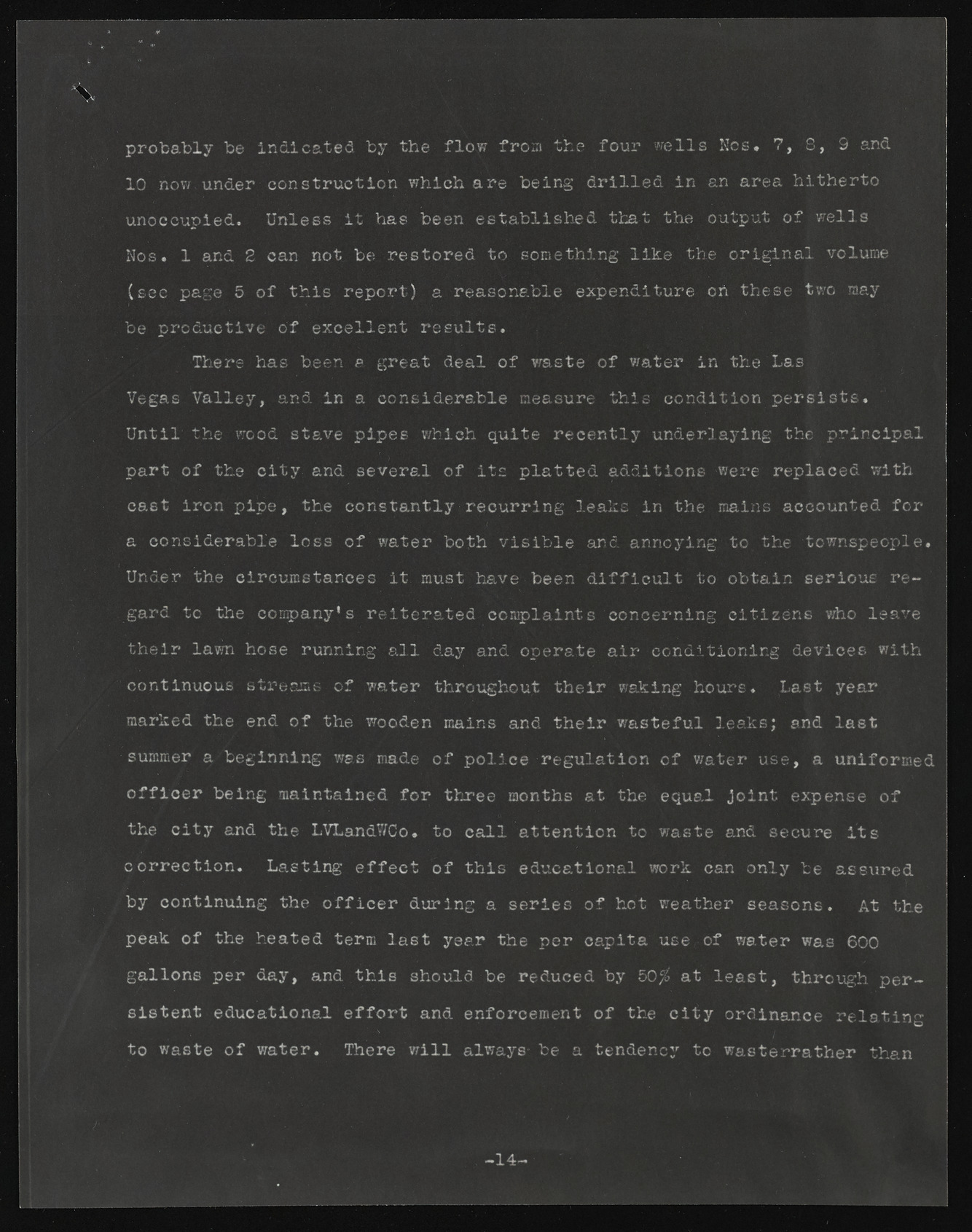Copyright & Fair-use Agreement
UNLV Special Collections provides copies of materials to facilitate private study, scholarship, or research. Material not in the public domain may be used according to fair use of copyrighted materials as defined by copyright law. Please cite us.
Please note that UNLV may not own the copyright to these materials and cannot provide permission to publish or distribute materials when UNLV is not the copyright holder. The user is solely responsible for determining the copyright status of materials and obtaining permission to use material from the copyright holder and for determining whether any permissions relating to any other rights are necessary for the intended use, and for obtaining all required permissions beyond that allowed by fair use.
Read more about our reproduction and use policy.
I agree.Information
Digital ID
Permalink
Details
More Info
Rights
Digital Provenance
Publisher
Transcription
probably be indicated by the flow from the four wells Nos. 7, 8 , 9 and 10 now under construction which are being drilled in an area hitherto unoccupied. Unless it has been established that the output of wells Nos. 1 and 2 can not be restored to something like the original volume (see page 5 of this report) a reasonable expenditure on these two may be productive of excellent results. There has been a great deal of waste of water in the Las Vegas Valley, a n d in a considerable measure this condition persists. Until the wood stave pipes which quite recently underlaying the principal part of the city and several of its p latted additions were replaced with cast iron pipe, the constantly recurring leaks in the mains accounted for a considerable loss of water both visible and annoying to the townspeople. Under the circumstances it must have been difficult to obtain serious regard to the c ompany’s reiterated complaints concerning citizens who leave their lawn hose running all day and operate air conditioning devices with continuous streams of water throughout their waking hours. Last year marked the end of the wooden mains and their wasteful leaks; and last summer a beginning was made of police regulation of water use, a uniformed officer being maintained for three months at the equal joint expense of the city and the LVLandWCo• to call attention to waste and secure its correction. Lasting effect of this educational work can only be assured by continuing the officer during a series of hot weather seasons. At the peak of the heated term last year the per capita use of water was 600 gallons per day, and this should be reduced by 50$ at least, through p e r sistent educational effort and enforcement of the city ordinance relating to waste of water. There will always be a tendency tc wasterrather than -14-

